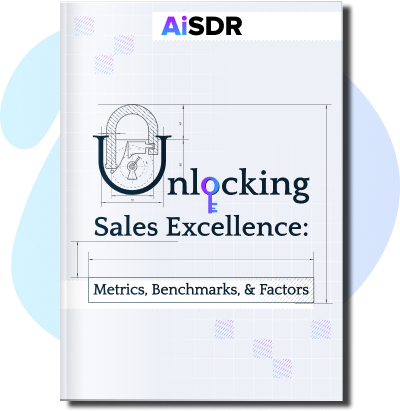Guide to Lead Generation Pricing for High ROI

Learn how to estimate your lead generation costs and how you can improve them
To keep your pipeline moving at a healthy pace, you need a steady stream of leads that aren’t burning all the cash in your bank account.
But for that to happen, you need to know how much you’re forking out for your leads, as well as which solutions will help you optimize your lead generation.
Lead generation pricing models
Do you know how much your leads cost?
You should. But if you don’t, here’s a quick refresher on different ways to find out.
Cost per lead
Cost per lead (CPL) is straightforward — you just divide your total spend on a lead generation campaign by the number of leads you get.
Total cost of lead generation / Number of leads = CPL
If you spend $6,000 on a campaign and get 73 leads, your CPL is $6,000/73 = $82.19.
CPL is an easy way to calculate the costs of lead generation. But it’s not the only one.
Plus, CPL has its drawbacks. Namely, it can be misleading as it factors in the raw number, not buyer intent. You might be generating a ton of cheap leads, but if they lack high intent and aren’t converting into sales, it’s a waste of time and resources. It also ignores conversion costs. Even if your CPL is low, if leads need a lot of additional nurturing, your cost efficiency plummets.
Cost per qualified lead
Cost per qualified lead (CPQL) is almost identical to CPL. The only difference is instead of dividing your total spend by the number of leads you get, you’re dividing by qualified leads.
Total cost of lead generation / Number of qualified leads = CPQL
This helps you account for lead quality over quantity.
Cost per appointment
Cost per appointment (CPA) is measured by dividing your lead generation spending by the total number of appointments made. The formula is even more straightforward than CPL and CPQL because appointments are easier to quantify.
Total cost of lead generation / Total number of appointments = CPA
For CPQL, you have to determine how you’ll score leads and what makes them qualified. With CPA, you only need to count the number of prospects who booked a meeting with your sales team.
CPA will usually be higher than CPL/CPQL as leads are likelier to be near the bottom of the funnel. But because you’re dealing with highly qualified leads who are closer to making a purchase, your ROI will usually be higher, too.
Bulk data purchasing
Since you are paying for a pool of data, you have to shell out a significant amount of money. But when you divide that dollar amount by the number of leads you are getting, you’ll see that this is one of the most affordable options.
Prices will usually be higher for specific demographics and behavioral data. The information may come from various sources, including private firms, public records, websites, and social media profiles.
The leads you get from bulk data purchasing are usually cold, but you can warm them up with good nurturing. It also helps to work with a reliable database provider such as ZoomInfo or RocketReach.
Retainer
Finally, you can outsource lead generation to a marketing agency. Agencies usually charge a monthly fee, regardless of how many leads they deliver. They also often offer other services like SEO, content marketing, and social media management.
These are four ways to get an idea of how much your leads are costing you, but plenty more things influence what you pay.
Factors that influence lead generation pricing
Understanding what drives lead expenses will help you control them better and ensure you’re actually getting a return on your investment.
Here are the top things to consider.
Industry type
Your industry determines whether the buyer’s journey will be straightforward, the levels of competition, and the regulatory standards you’ll have to conform to.
- Complexity of the buyer’s journey – The more complex your industry’s sales cycle, the more effort it takes to capture leads, which pushes costs up. Software is one example. IT sales deals take an average of five decision-makers and six months to evaluate a software product. As a result, software buyers are likely to seriously consider only a few vendors. The average shortlist includes just four providers.
- Competition – Market saturation also drives up lead prices. In software, dozens of companies may offer a similar type of tool, and buyers are usually highly discerning. It takes a lot to catch their interest, so warm leads don’t come cheap.
- Company size – If your potential clients are large companies, the real decision-makers won’t easily squeeze appointments into their busy schedules. Turning them into leads will take a lot of effort (and cash).
- Regulations – Regulations like GDPR and CCPA have tightened the restrictions on data use. Businesses need to fully disclose how they are using customer data. Many adopt a consent-based approach, where prospects provide information of their own volition. This implies spending on high-quality, gated content to collect contact details. The high cost of collecting customers may impact lead pricing.
The good news is that if leads do cost more in your industry, you’ll also be more likely to see higher ROI to balance it out.
Lead generation methodology
Your choice of lead generation methodology will also determine the costs of your campaign.
- Inbound marketing – Instead of directly reaching out to prospects and their data, you can draw them in. Inbound campaigns take a long-term approach, impacting the prices of leads.
- Outbound prospecting – With outbound, you’ll be directly tapping prospects with cold calls, outreach emails, and direct mail. Although this speeds up the lead-gathering process, it still involves many moving parts that affect pricing.
- Paid advertising – Expenses for Google Ads, LinkedIn sponsored posts, and Facebook News Feed ads will depend on how much exposure you’d like to have. More compelling content and targeted audience demographics will boost your ROI with these options.
The best approach is a mix of these three methodologies. However, you’ll need to decide what works best for your case, and you’ll need to carefully plan your lead generation to prevent budget creep.
Lead quality
Leads from bulk purchases or low-touch engagement may be cheaper, but they’re also much more likely to be cold. You’ll have to pour in more resources to warm them up.
High-quality leads tend to be more expensive to acquire, which reflects the high-touch engagement and resource-intensive marketing campaigns that go into them. But since warm leads are further along the sales pipeline, they’ll take fewer interactions — and less budget — to convert.
Geography
Lead costs can also depend on where your target customers are located.
- If you plan to capture leads in a location with vendor saturation, you can expect higher costs.
- Ad agencies may also charge more for their services and ad spaces in some geographical areas.
- The costs of capturing leads can also depend on the regional tier. Country tiers categorize regions based on their economic conditions and people’s spending habits. For example, Tier 1 countries, such as the US, UK, and Australia, would be a source of leads with greater purchasing power, which makes them pricier (but you can also expect bigger payouts).
Business overhead & operational costs
There are plenty of things going on in the background that will push up your lead generation investment. Make sure you take them into account.
- Resources for daily operations – Your sales and marketing teams are using computers, possibly office space, and utilities as they complete their day-to-day lead generation tasks.
- Salaries – As your requirements go up, the more you’ll pay for people to produce high-quality articles, post on social media, make cold calls, send outreach emails, and put together ad campaigns.
- Software – CRM, AI content generators, and email automation tools can all save you time and money, but they’ll also add to your raw campaign costs.
Considering all these elements will give you a more complete picture of what your leads really cost.
Customer value
It takes a lot to convince businesses to purchase big-ticket SaaS products and software development contracts because of the amount companies are investing in them. As a result, you have to pour more time and resources into catching the decision-maker’s attention. This translates to higher marketing expenses.
Bottom line: many of the things that drive the costs of generating leads are unavoidable. But you can still protect your budget by investing in the right software and using it well.
Lead generation software: Feature & pricing
Great sales software keeps campaign costs down by helping you capture and nurture leads, assess campaign performance, and understand where you can improve.
Here’s how three key tools shape up regarding features and pricing.
AiSDR

Powered by generative AI, AiSDR can automate the full lead cycle, from capturing leads through personalized nurturing to booking a demo. A subscription gets you access to quality bulk lead databases and proven AI power for lead nurturing.
AiSDR features:
- Integrated lead database – AiSDR lets you access more than 700 million profiles on Apollo and RocketReach without having to open a separate account or pay additional fees.
- Lead capture – Easily filter profiles based on deep signals such as hiring intent, recent funding, and tech stack.
- Personalized outreach – AiSDR automatically personalizes lead communications based on information from your database, HubSpot properties, or a prospect’s three most recent LinkedIn posts.
Pricing: All-in-one pricing starts at $750 per month for 1,000 emails. You also get unlimited leads, text messages, LinkedIn outreach, 24/7 customer support, and mailbox warm-up at no extra cost.
HubSpot

HubSpot’s marketing hub brings customer insights and automated tools for capturing and managing leads under one roof.
HubSpot features:
- Lead generation. HubSpot offers B2B sales tools for creating forms, landing pages, and ads that capture new leads.
- Lead management – HubSpot’s personalized prospecting workspace gives sales reps a single view of their pipelines, making it easy for them to know where prospects are in the buying journey.
- Analytics and reporting – Built-in analytics and reporting let HubSpot users track offers and ads, making it easy to see what’s working.
Pricing: HubSpot’s paid plans start at $800 per month. This gives you access to lead scoring, custom reporting, and omni-channel sales automation tools.
Salesforce

Salesforce is cloud-based CRM software that provides access to unified profiles and built-in analytics, allowing sales and marketing teams to track and optimize the entire customer lifecycle. Built-in lead qualification allows reps to focus their resources on the more promising ones. This can significantly bring down costs to boost ROI.
Salesforce features:
- Customer data platform – Salesforce provides access to centralized data, allowing marketers to proactively manage every touchpoint across the customer lifecycle.
- Marketing analytics – Salesforce’s intelligent marketing analytics platform makes it easy to identify opportunities to optimize campaign performance and increase cost savings.
- Lead scoring – Salesforce features Einstein, an AI tool that analyzes your data and scores leads, enabling your teams to identify qualified leads and allocate resources more productively.
Pricing: The starting fee for Salesforce’s marketing suite is $1,250 per month. This provides access to tools for lead generation and management, as well as campaign reporting and insights.











